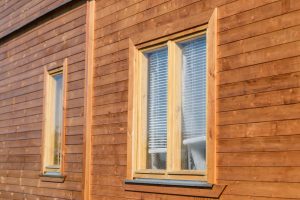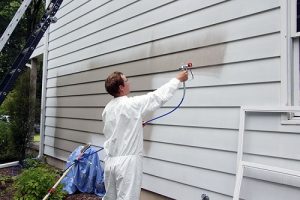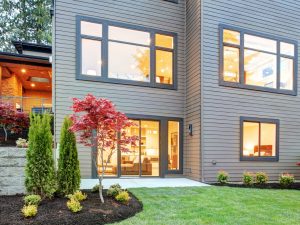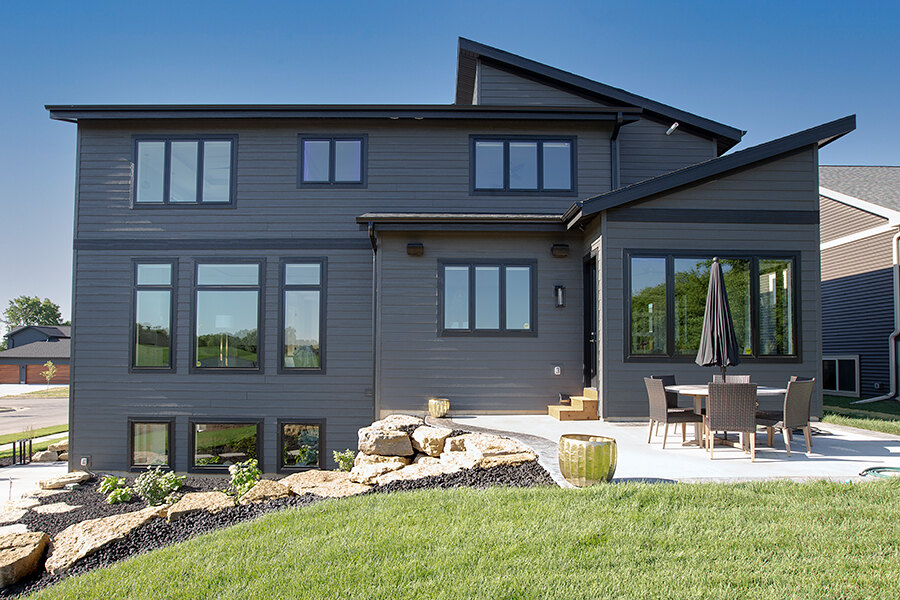Types of Exterior Siding for Houses
Vinyl, wood, and even aluminum are frequently ranked as the top three
types of exterior siding for houses due to their exceptional combination of affordability, style, and durability. Vinyl siding comes out for its low maintenance, wide color options, and cost-effectiveness, making it a favorite for modern homeowners. Wood siding provides unmatched natural beauty and charm, ideal for traditional or rustic designs, though it requires regular upkeep. Aluminum siding, on the other hand, is valued for its resistance to moisture and fire, especially in coastal or humid regions. Every choice has advantages of its own, helping homeowners in finding a balance between functionality and aesthetics.
House siding is the protective external layer on a home’s exterior. It protect the house from rain, wind, sun, and other weather conditions. Good siding adds insulation, increases home value, and affects how much maintenance your home will need in the long run.
Top 3 Types of Exterior Siding for Houses
Your home’s exterior plays a big role in how it looks, feels, and holds up over time. Selecting the appropriate siding increases energy efficiency, protects your home from weather damage, and enhances curb appeal. In this guide, we’ll walk you through the best types of siding for houses, including their pros, cons, and how to choose the right one.
Vinyl Siding
With good reason, vinyl siding is among the most popular choices for residential homes in the United States. It’s cost-effective, low maintenance, and available in an impressive range of colors and styles. Whether you’re after a traditional clapboard look or a modern board-and-batten, vinyl can match your taste. One major advantage is that it doesn’t need to be painted, saving both time and money. However, it can crack in cold weather or warp in extreme heat. Still, for homeowners who want a practical and visually appealing solution with minimal upkeep, vinyl is a solid choice.
Wood Siding
Wood siding brings a timeless, natural beauty that no other material can truly replicate. It’s often chosen for its classic charm, especially in cottage, farmhouse, and historic homes. Cedar, pine, and redwood are among the most popular species used. Wood can be shaped into shingles, shakes, or horizontal boards. While it offers excellent insulation and can be customized with paint or stain, it also demands regular care. You’ll need to seal it, repaint it, and inspect it for insects or rot. For homeowners willing to invest in maintenance, wood siding offers a warm, inviting finish that ages gracefully.

Aluminum Siding
Aluminum siding is a lightweight, rust-resistant, and fireproof option that works particularly well in wet or coastal regions. It’s a practical choice for those looking for long-lasting exterior protection with relatively little upkeep. Aluminum can be installed in horizontal or vertical panels and comes pre-painted, though it can be refreshed over time with aluminum siding paint. It’s also recyclable, making it a more eco-conscious choice. Minor dents and scratches can occur, especially from hail or impact, but aluminum siding repair is generally easy and affordable. Its simple look fits both modern and traditional homes, depending on the panel style.
Vinyl vs. Wood Siding
Choosing between vinyl and wood siding often comes down to a balance of aesthetics and effort. Vinyl siding offers a modern solution with minimal upkeep—it doesn’t require painting, is pest-resistant, and lasts decades with just occasional cleaning. Wood siding, on the other hand, offers unmatched natural beauty and authenticity. It can be customized easily with different finishes and styles. However, wood needs routine maintenance, which includes sealing, staining, or painting, and checking for decay. If you prioritize low maintenance and cost, vinyl is a smart option. But if you value classic appeal and don’t mind a bit of upkeep, wood might be the way to go.
Wood vs. Aluminum Siding
Both wood and aluminum siding have their strengths, but they serve different needs. Wood siding delivers a natural and cozy look that adds character and charm to any home. It’s flexible in terms of design and gives your home a traditional, high-end finish. In contrast, aluminum siding is more industrial in appearance but stands out for its durability and low maintenance. It resists fire, pests, and moisture, making it ideal for areas with challenging weather. While wood needs repainting and sealing over the years, aluminum requires far less attention. So if you prefer elegance and are okay with regular care, go with wood. For function and ease, aluminum makes sense.
Aluminum vs. Vinyl Siding
Vinyl and aluminum siding are often compared because they both offer durability and low maintenance, but they perform differently depending on your environment. Aluminum is additionally resilient against fire and more resistant to water, making it ideal for coastal or humid climates. It can scratch under pressure, but it doesn’t melt or warp in heat like vinyl can. Vinyl, on the other hand, is cheaper and easier to install. It also offers more color options and styles, making it a favorite for modern curb appeal. Ultimately, aluminum suits homeowners in tough climates who want strength, while vinyl is best for those wanting an affordable, stylish, and easy-care solution.

Factors to Consider When Choosing House Siding
Before picking any siding, think about these factors.
Climate: Do you live in a rainy, snowy, or very hot area?
Maintenance: Do you prefer low-maintenance options?
Style: What matches your home’s architecture?
Budget: How much can you spend now and over time?
Durability: How long will it last before needing replacement?
Best Siding for Different Home Styles
- Traditional homes: Fiber cement or wood siding
- Modern homes: Composite or large wood panels
- Farmhouse-style: Board-and-batten vinyl or metal
- Cottage-style: Natural wood or stone veneer
Which Siding Is Best for You?
Still thinking about the best type of house siding? Think about your climate, style preferences, and how much time you’re willing to spend on upkeep. If you want minimal maintenance, vinyl or metal may be your best bet. Love a natural look? Go for wood or stone. Want something strong and stylish? Fiber cement or engineered wood could be right.
For homeowners comparing aluminum vs. vinyl siding, consider that aluminum is more resistant to fire and better for humid areas, while vinyl is cheaper and easier to install.
Frequently Asked Questions
Which is better, wood or vinyl siding?
It depends on your priorities. Vinyl is low-maintenance and affordable, while wood offers a natural, timeless look but requires regular upkeep.
What is the disadvantage of vinyl siding?
Vinyl can crack in extreme cold or warp in high heat, and it’s not as impact-resistant as some other materials.
Does vinyl siding last longer than wood?
Yes, vinyl generally lasts longer with less maintenance, while wood may need frequent painting or sealing to stay in good shape.
Is aluminum siding better than wood?
Aluminum is more durable and resistant to fire, moisture, and pests, making it a better low-maintenance choice in many climates.
Why do people use aluminum siding?
People choose aluminum siding because it’s rust-resistant, fireproof, and ideal for humid or coastal areas.
Is metal siding better than wood?
Metal siding typically outperforms wood in terms of durability and maintenance, but wooden siding offers a richer, more traditional look.
Which is better, aluminum siding or vinyl siding?
Vinyl is more budget-friendly and easier to install, while aluminum holds up better in heat and moisture and is more fire-resistant.
Is aluminum or vinyl better?
Both are beneficial options. Aluminum is stronger against the elements, but vinyl is more cost-effective and available in more styles.
What are the disadvantages of aluminum siding?
Aluminum can dent easily, fade over time, and may be noisier during wind or rain.
Which lasts longer, vinyl or aluminum siding?
Both can last 30–40 years with proper care, but aluminum may hold up better in harsh weather over time.

Conclusion
There are many different types of siding for a house, each offering unique benefits and visual appeal. WhThe correct siding can change the appearance and functionality of your house, whether you’re looking for sleek modern lines, rustic charm, or long-lasting durability.xplore the types of exterior siding for houses carefully, and choose the one that fits your home’s style, your needs, and your future goals.
Ready to update your exterior?
Contact Us Now! Start with the best type of siding for a house that reflects your vision and protects your investment for years to come.




